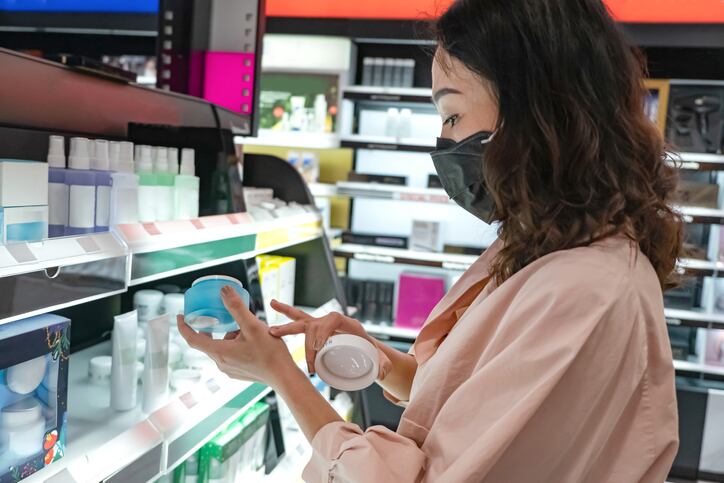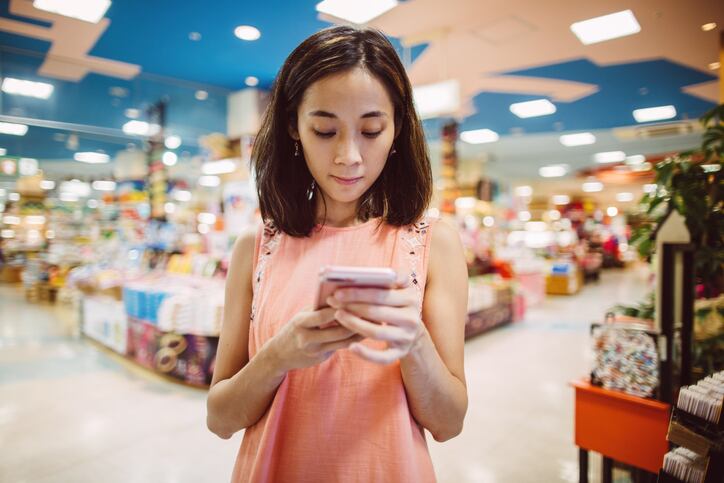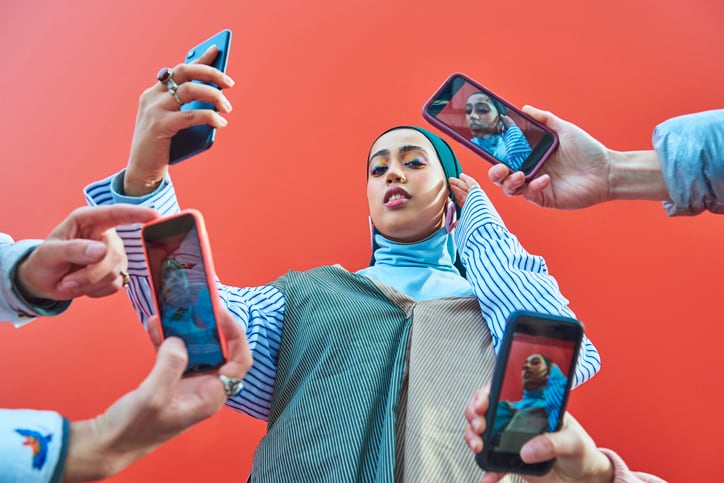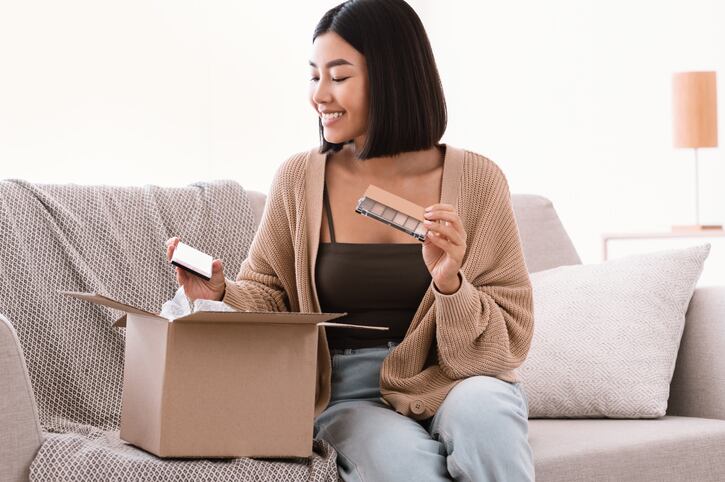Retail strategy agency Outform recently published its The Changing Face of Health & Beauty report outlining key trends from surveys conducted amongst 2,000 health and beauty consumers in the UK, Germany and USA in September 2021.
Findings indicated that despite vast advances in beauty technology during the COVID-19 pandemic, many consumers still preferred touching and trying on products. Half of UK consumers, for example, still considered testing in-store important to purchase decisions, even higher at 63% amongst those aged 25-34. And across all three markets, 39% of beauty consumers said sampling also mattered more now than it did to them before the pandemic. Survey results showed that just 25% of consumers said touchless tech like Augmented Reality (AR) played a significant role in what they bought, though 33% of Gen Z consumers (aged 18-24) said technology offerings like online makeup tutorials were important and 36% used digital in-store displays.
So, what did all this mean for the future of beauty retail and branded marketing strategies as industry edged it way towards the end of 2021?
Consumers crave an ‘almost traditional experience’
“As the research shows, there is an appetite to reinstate the try-before-you-buy mindset,” said Simon Hathaway, EMEA MD of retail strategy agency Outform.
“What’s been wonderful in the research is it’s showing [consumers] want that almost traditional experience, and that is a clear play and for me that’s quite exciting,” Hathaway told CosmeticsDesign-Europe.

“…It feels like there’s a sense of normality and peoples’ values haven’t shifted as much as we thought they would.”
Retailers, brands and agencies, including Outform, he said, had anticipated big transitions and new concepts in beauty that, in part, had happened but not perhaps to the extent imagined.
Online-offline combined – mobile device use in-store needs unified commerce
One shift that had changed, sped up by the COVID-19 crisis, was that the concept of online versus in-store no longer reflected reality. “Our consumer today is online in-store; the screen is in their hands on their mobile device.”
Hathaway said that for brands and retailers, this was important to understand when developing strategies as they had to encourage that digital consumer engagement and interaction whilst in-store. This created a “unified commerce” – more than just an omnichannel strategy – where discovering and shopping across online and offline was seamless for consumers, he said, and provided plenty of insight via data for the brand and/or retailer. Brands especially, he said, had to start thinking more about how to bring digital experiences to the shop floor for consumers to drive brand equity to the “next level”.
“Whilst [consumers] want to go in-store, it might not be where they buy. And that, I think, is potentially the real challenge because the traditional point of sale is not guaranteed to be the point of transaction; the transaction might happen online. That’s why it’s so important to get that data connectivity and unified commerce in place.”
The metaverse to become ‘very interesting’ for beauty retail
And as technologies continued to advance at lightning speed, including the evolution of the metaverse, he said the mobile device and handset was set to become “very powerful in the store” because soon brands and retailers would be able to build out “far greater experiences in-store for mobile devices”.
“The metaverse is very interesting (…) It’s just going to be interesting how the metaverse blends with the real world,” he said.

And there were already some signs on what metaverse consumer experiences could look like, Hathaway said, with gaming majors like Fortnite already successfully hosting live concerts within games and pioneering plenty in the metaverse space. Similarly, games like Animal Crossing had already worked with several fashion and beauty brands enabling users to create looks characters in the game.
The metaverse, he said, was set to become a “big connective area” for brands and retailers and a space that certainly needed to be looked at.
More own-brand beauty stores to come?
Hathaway said it was likely that within all of this, beauty might start to open increasing numbers of own-brand, flagship stores that enabled them to have “complete control” of the retail environment and consumer experience. Own-brand stores enabled the creation of a “destination” of sorts, he said, and allowed brands to sharpen the personalisation angle that had become so important in beauty. Wider movements like health and wellbeing, for example, would offer plenty of opportunities for creating experiences or events in such stores, he said. “Those are things you rarely get a retail space to do, unless you get a very large beauty hall and pay a lot of money for that space.”
Importantly, he said that if these stores were combined with e-commerce, brands would be able to measure sales geographically and observe the “halo effect” of the physical store. Many big brands, for example outside of the beauty world – Adidas being just one example – had already proven that physical stores drove online sales, meaning beauty had something to follow, he said.
“Obviously, the challenge we’ve got is, unfortunately, the C-suite in most retailers and certainly the C-suite in the city or where the stocks are, are talking about retail as if it’s dying. Retail is not dying; retail commerce is not dying. We’re still buying a lot of stuff, we’re just not doing it in the same way we used to do it,” he said. “Yes, [industry] needs to look at investments and structure, but fundamentally it’s clear if you get the right physical experience in a store, it can drive your online sales.”
‘Dare to innovate’ – beauty’s future retail outlook
Hathaway said the next step for brands and retailers who “dare to innovate” would be creating data touchpoints within all of this so they had a “thorough understanding of customer expectations and habits, from how they shop all the way to their unique beauty regimes”.
Hathaway previously spoke to CosmeticsDesign-Europe as a guest on our Beauty 4.0 Podcast about the digital acceleration of beauty retail amidst COVID-19. You can catch up on this episode HERE.




